Exploring Slab Seeker Services in Geology
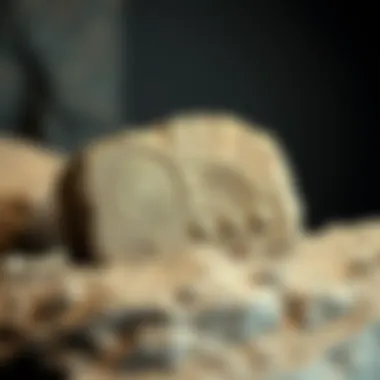
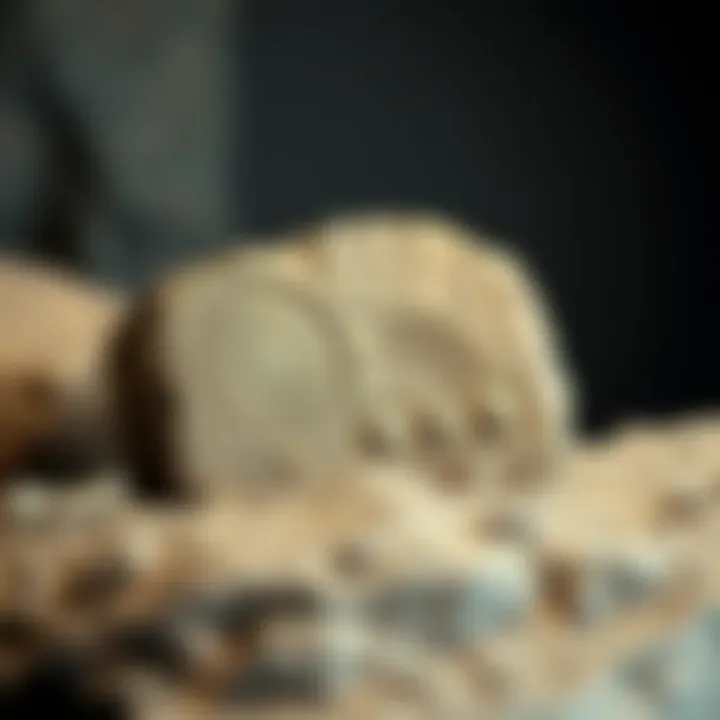
History and Origins
The world of slab seekers is steeped in history, intertwining with the very beginnings of humanity's fascination with the natural world. Since time immemorial, people have looked to the earth and found treasures within its depths. This pursuit has evolved into what we now recognize as the slab seeker services, dedicated to the collection and preservation of geological artifacts.
Overview of Collectibles, Rocks, and Fossils
Collecting has been a cornerstone of human culture. From primitive tribes gathering stones for tools to modern enthusiasts seeking exotic fossils, the urge to gather is as old as civilization itself. Slabs, often containing fossils or beautiful mineral patterns, speak to a time long gone, awakening the collector's instinct. When you touch a slab, you’re holding a piece of history; each imperfection tells a story of eons gone by.
The journey of slab seeking can be traced back to the Enlightenment when amateurs and scholars alike took a keen interest in natural sciences. These early collectors laid the groundwork for modern geology and paleontology, filtering through layers of sediment to uncover ancient life. Collections formed during this time often found their way into museums, further fueling public interest in geology and paleontology.
Historical Significance and Cultural Impact
Slab seeking is not merely a hobby but rather a reflection of broader human interests—science, art, and history. As cultures evolved, so did their perception of rocks and fossils. Ancient civilizations revered certain stones, attributing mystical properties to them. The Egyptians, for instance, used lapis lazuli in jewelry and amulets, while early humans painted caves with natural pigments extracted from minerals.
In modern history, the craze for fossil hunting soared in Victorian England, spurred by a burgeoning interest in both paleontology and natural history. Fossils were not just for scientists; they were fashionable. People displayed them in parlors, hoping to impress guests with their finds. The trend highlighted a blend of education and entertainment, emphasizing a growing appreciation for the natural sciences that persists today. This cultural shift paved the way for dedicated slab seeker services, fostering both amateur and professional communities devoted to discovering and preserving these treasures.
Identification and Classification
Understanding slab seeker services and what they entail requires some knowledge about how rocks and fossils are identified and classified.
Guide to Identifying Rocks and Fossils
Identifying collectibles can be somewhat like piecing together a puzzle. Different rocks and fossils come with unique characteristics. Here are several identifiers:
- Color and Texture: The vibrant hues of minerals or the rough texture of sedimentary rocks can reveal much about their origin.
- Fossil Patterns: Look for distinct shapes or inscriptions on slabs—the sinewy trails of ancient creatures often harbored in sediment can indicate a fossilized presence.
- Geological Context: Knowledge of local geology can help streamline identification. Knowing what formations, like limestone or shale, produce particular fossils is crucial.
Common Types and Variations
When delving into slab seeker services, one must be familiar with common forms of rocks and fossils:
- Sedimentary Rocks: Often sedimentary, these rocks, such as limestone and sandstone, are prime carriers of fossils—an eager slab seeker's treasure.
- Igneous Rocks: While not typically fossiliferous, they can offer stunning visual appeal with their unique textures and mineral compositions, appealing to collectors.
- Fossilized Wood: This striking form of fossil can often be found in slabs and embodies the beauty of nature in its petrified state.
Each slab, whether a simple rock or a complex fossil, holds its own charm and significance. As collectors go deeper into this world, they begin to understand the subtle distinctions and connections between the artifacts they seek.
Engaging in slab seeking enriches not just personal collections but also contributes to the broader tapestry of geological and historical knowledge.
In sum, slab seeker services have evolved from a mere pastime to a dedicated field of study that bridges history, culture, and science. Understanding their origins affirms their relevance today.
For more on geology and paleontology, visit Wikipedia or Britannica.
Intro to Slab Seeker Guide Services
The realm of slab seeking is an intricate landscape that merges geology with a passion for collecting unique historical artifacts. Understanding slab seeker guide services is crucial for enthusiasts navigating this fascinating domain. These services offer critical insights into the methods, ethical considerations, and practical approaches of slab collection.
For collectors, slab seekers serve as invaluable allies. They not only help in identifying quality slabs but also in ensuring that the collection process respects both legal frameworks and environmental concerns. The nuances of slab guiding go beyond just finding fossils or minerals; they encompass strategies for sustainable collecting and preserving the integrity of geological sites.
Moreover, these services help demystify the often-confusing terminologies associated with geology and paleontology. Collectors equipped with this knowledge can make informed decisions, maximizing their engagement with the natural history that slabs represent. There’s a certain thrill in knowing you’re involved in a practice that respects both the land and its hidden treasure.
Another significant aspect is the networking opportunities these guide services provide. They foster connections among collectors, sellers, and scientists, creating a community passionate about preserving and appreciating the earth's geological history. This sense of community can lead to collaborative efforts, shared resources, and even exciting opportunities for fieldwork.
To ensure a thorough understanding, let’s explore the variations in slab seeker services. Some operate at a local level, offering personalized guidance, while others may engage on a broader scale, navigating complex regulations and high-volume markets. Each has its own set of benefits and challenges, yet all fundamentally aim to elevate the collector’s experience.
"The joy of slab seeking lies not just in the objects collected, but in the journey and knowledge gained along the way."
To explore more about the practices and importance of slab seeking, you can visit Wikipedia or check out discussions on related topics at Reddit.
Defining Slab Seeker Services
When it comes to the world of geology and paleontology, the terminology can sometimes leave even the most seasoned enthusiasts scratching their heads. Slab seeker services are no exception. So, what exactly does it mean to be a slab seeker? To understand this, we first need to break down the concept.
At its core, slab seeker services refer to those that specialize in the identification, excavation, and collection of geological slabs that often contain valuable fossils or mineral specimens. These services bridge the gap between scientific exploration and private collecting.
The importance of distinguishing slab seeker services lies not only in the professional capacity they bring but also in the benefits and considerations they present to collectors and researchers alike.
Key Elements of Slab Seeker Services
- Identification and Exploration:
Slab seekers typically employ both educational background and field experience in geology. They can recognize the right formations that might yield high-quality specimens, which is invaluable for anyone looking to start or expand their collection. - Excavation Techniques:
Different techniques may be used in the field, such as careful digging to minimize damage to the specimen. Experienced slab seekers know how to remove slabs without compromising their integrity. - Quality Assessment:
One of the significant roles of slab seekers is to evaluate the potential value of the finds. This includes assessing the quality of the fossil and its educational or collectible merit, which can be a game-changer for the aspiring collector.
Benefits of Utilizing Slab Seeker Services
- Expert Guidance:
The wisdom and insider knowledge that comes from engaging a slab seeker can transform a generic collecting hobby into an exciting lifelong endeavor. - Time-Saving:
Instead of wandering aimlessly around potential sites, slab seekers provide directed approaches that can significantly boost your success rate. - Ethical Collecting Practices:
Well-established services emphasize the importance of ethical considerations in collecting, encouraging a mindset that respects both nature and legal frameworks surrounding geological specimens.
Considerations about Defining Slab Seeker Services
When deciding whether to enlist the help of slab seeker services, consider the following:
- Costs vs. Benefits:
Is the financial investment in hiring a slab seeker justified by the potential finds? For serious collectors, the answer could be a resounding yes. - Reputation and Trust:
Look into a slab seeker’s history, know their standing in collector circles. This can lead to better service and value in your endeavors. - Community Engagement:
Often, slab seekers can connect you with a community of other collectors and enthusiasts who can provide mutual support and shared experiences.
"Engaging with slab seeker services is not merely about acquiring specimens; it's about fostering a deeper connection to the Earth's history and the treasures it holds."
Ultimately, defining slab seeker services goes beyond a mere description. It entails understanding their significance in the ecosystem of geological collecting and fostering a responsible, educated approach to a passion that connects us with the past.
The Importance of Slab Collecting
Slab collecting plays a pivotal role in both the geological and paleontological landscapes. It is not just about hoarding pieces of rock or fragments from epochs long gone; it’s a gateway to understanding Earth’s history and the evolutionary tales that these slabs tell. For many enthusiasts, slabs act not only as collectibles but as keys to deeper knowledge about our planet's formative processes.
Enhancing Scientific Understanding
Slabs often contain perfectly preserved fossilized organisms and materials that offer insights into ancient environments. Gathering these geological artifacts allows collectors and scientists alike to piece together historical narratives. When you hold a slab in your hand, it’s akin to clutching a page from a living history book. Each line, every texture, and color variation narrates the transformation of landscapes over millions of years. As these collectioons grow, they contribute to broader scientific research and understanding by providing data that may have been previously inaccessible.


"In the right hands, a single slab can reveal a myriad of secrets about our world and beyond."
Fostering Appreciation for Geological Pieces
For many collectors, slabs symbolize beauty and an ancient bond with the Earth. The intricate patterns and hues can be breathtaking, and this aesthetic value fosters a sense of respect and admiration for natural history. Slabs encourage not just collection but also appreciation. Enthusiasts often find themselves learning about the formation processes of stones, the minerals within them, and the era they date back to, which deepens their connection with these objects.
Community and Conservation
Engagement in slab collecting can foster community among like-minded individuals. Enthusiasts often convene at events, online forums, or local groups where they share knowledge, swap finds, and discuss ethical collecting practices. In this way, slab collecting transcends individual experience, encouraging a collective commitment to responsible stewardship of the environment. With such a strong community set around it, slab collecting can enhance the resolve towards sustainable practices, ensuring that future generations can also treasure these natural artifacts.
Economic and Educational Benefits
There are practical benefits to slab collecting as well. Collectors can maximize the value of their slabs through transactions in markets catering to enthusiasts, educational institutions, and even museums. This aspect is critical, as it can support research and educational initiatives. A well-documented and ethically sourced slab collection might even become a crucial teaching resource at universities or conservation centers, benefitting the larger community.
Key Attributes of Effective Slab Seeker Services
Understanding what makes a slab seeker service effective is crucial for anyone delving into this niche field of collection. Quality services don’t just facilitate the acquisition of slabbed pieces; they enhance the overall experience of collectors, ensuring both safety and satisfaction. Here’s a look at two primary attributes that truly set apart the best of the best in slab seeker services.
Experience and Expertise
Experience in slab seeking is more than just a badge of honor; it’s a necessity. A well-practiced slab seeker brings invaluable insight to the table, often blending years of field knowledge with an understanding of geological intricacies. This experience helps them identify not just the valuable slabs but also the ones that could cause collectors more headache than joy.
Here are some significant points to consider:
- Field Knowledge: An experienced slab seeker has an almost intuitive sense of where to look. They've spent years traversing various terrains and can detect subtle signs of rich geological deposits.
- Customer Education: Experts often go the extra mile, providing education on how to identify slabs of varying quality, enhancing the collector's own knowledge base in the process.
- Network Connections: Years in the field often mean strong connections with other professionals. This network can be instrumental when sourcing rare slabs or getting tips about upcoming digs.
When assessing slab seeker services, check if they are affiliated with reputed geological societies or organizations. This can often be an indicator of their level of professionalism and dedication to the field.
Safety and Ethical Practices
Navigating the world of slab seeking doesn’t come without risks, and this is where safety and ethical practices come into play. Responsible slab seekers understand the importance of collecting materials without compromising environmental integrity or safety standards. It is crucial to not just focus on what you can take, but also how your actions affect the environment.
Key aspects of safety and ethics include:
- Permitting and Regulations: Effective services are versed in local laws governing the collection of geological materials. They ensure that all necessary permits are obtained, avoiding legal entanglements that can arise from collecting in unauthorized areas.
- Impact Awareness: Environmentally conscious slab seekers promote practices that minimize damage to natural habitats. This includes avoiding over-collection and advocating for areas that allow sustainable collecting.
- Community Engagement: Ethical collecting often involves educating others about why responsible practices matter. Engaging with local communities and encouraging a respectful approach to nature fosters goodwill and often leads to better relationships with landowners and local authorities.
Slab seeking should not just be about collection but caring for the myriad ecosystems that harbor these treasures.
Selecting a Reliable Slab Seeker Service
Choosing the right slab seeker service can make a world of difference for a collector. Whether one is hunting for a specific specimen to complete a collection or is simply excited about the adventure of slab seeking, aligning with a trusted provider adds a layer of assurance to the experience. When it comes to selecting a reliable service, a few key elements come into play. These not only center around quality and integrity but also the value they add to your slab collecting efforts.
Researching Potential Providers
The primary step in this selection is conducting thorough research. You might liken it to checking under the hood of a car before buying; it’s critical to understand what you’re getting into. Look for providers with a strong reputation in the community.
Some factors to consider during your research include:
- Background and Experience: A seasoned provider will have a deeper understanding of geological contexts and collection techniques. Ask about their history and what areas they specialize in.
- Methods and Protocols: Do they follow established practices? Ethical considerations are key in slab seeking to ensure the preservation of local ecosystems.
- Certifications and Affiliations: Being part of recognized organizations can indicate their professional credibility. Check if they are associated with groups like the Geological Society or local fossil-oriented societies.
It's also wise to utilize online resources. Websites like reddit.com host discussions and recommendations regarding slab seekers. Social media platforms provide avenues to connect with other collectors and hear their first-hand experiences.
Client Testimonials and Reviews
Feedback from previous clients can serve as a revealing window into the reliability of a slab seeker service. As they say, the proof is in the pudding.
When searching for testimonials, it's important to sift through the noise and look for consistent themes rather than one-off remarks. Here are a few considerations when evaluating client feedback:
- Consistency in Praise: Look for repeated notions such as timely delivery, quality of slabs, and customer service. A good service will often garner a slew of positive reviews.
- Balanced Views: While a service may have many positive reviews, a couple of negative ones can reveal important red flags. Check if the provider responded constructively to feedback, demonstrating their willingness to improve.
- Engagement and Community Feedback: Often, being engaged with the community (like on Facebook groups focused on slab collecting) can elevate a provider's standing. Engagement indicates a commitment not just to sales, but also to the hobby itself.
In summary, selecting the right slab seeker service involves a thoughtful approach, analyzing both provider credentials and customer experiences. This diligence ensures that collectors enjoy reliable and meaningful interactions in their quest for geological treasures. A trusted service can ultimately transform a simple slab seeking mission into an enriching adventure.
Understanding the Process of Slab Seeking
Delving into the intricacies of slab seeking is not just about acquiring geological or paleontological treasures; it’s about appreciating the journey that leads to those artifacts. For rock and fossil collectors, comprehending this process is paramount as it allows them to not only enhance their collections but also deepen their understanding of the natural world. The process encompasses two main stages: preparation and fieldwork, both of which lay the groundwork for successful slab collection.
Preparation and Planning
Preparation is akin to setting the stage before a grand performance. Without thorough planning, the chances of success dwindle. When embarking on a slab seeking venture, there are several key steps one should take:
- Research the Site: Understanding the geological history of the area can provide insights into what one might find. Studying local geology books or scouring online databases can be beneficial. Websites like Geological Societies or US Geological Survey offer a wealth of information.
- Gather Tools and Supplies: having the right tools can make or break a slab seeking expedition. Essential items include chisels, hammers, measuring tape, and proper safety gear. Organizing a checklist can aid in ensuring nothing is forgotten.
- Permits and Regulations: Depending on the location, collectors may need to secure permits for slab collection. Ignoring these legalities can lead to unwelcome repercussions anywhere from fines to confiscation of collected items. Knowing local laws is imperative; one can often find this information through state or local government websites.
Careful preparation ensures that the collector approaches the hunt with both enthusiasm and readiness, setting the stage for fruitful exploration.
Fieldwork and Techniques
When all is set, the fieldwork begins—this is the heart and soul of slab seeking. The methods employed during this phase can significantly influence the success rate of finding valuable slabs.
- Observational Skills: Effective collectors rely heavily on keen observation. Looking for unique geological formations or signs of fossilized materials is essential. Paying attention to color variations or unusual markings within the terrain can signal the presence of slabs.
- Extraction Methods: Once a promising slab is located, knowing how to extract it safely is crucial. This often requires understanding the surrounding rock structure and using tools wisely to avoid damaging the slab or oneself. Whether one is using a simple hammer and chisel or more advanced tools, patience is vital.
- Documenting Discoveries: Keeping track of where each slab was found adds immense value. Not only does it provide future context for the item, but it also aids in potential scholarly contributions. Collectors should carry a notebook or use their smartphones to record specific details about each find.
Exploring the outdoor terrain is as rewarding as discovering the slabs themselves. The experience is enriched by interactions with nature.
By mastering these preparation and fieldwork techniques in slab seeking, collectors not only secure quality items for their collections but also foster a deeper connection with the geological narratives of the Earth. Engaging in slab seeking is more than a hobby; it’s a continuous learning journey tied to the fabric of Earth’s history.
Evaluating Slab Quality and Value
Evaluating the quality and potential value of slabs is fundamental for collectors and enthusiasts alike. A well-chosen slab can lead to impressive displays or considerable financial gains, while poor selections might lead to disappointment or loss. Understanding what contributes to the worth of a slab can greatly influence collection strategies and investment decisions. This evaluation process goes beyond superficial traits; it considers factors like rarity, structural integrity, and demand in the market.
Identifying Key Characteristics
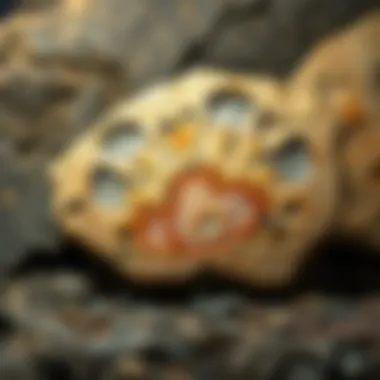
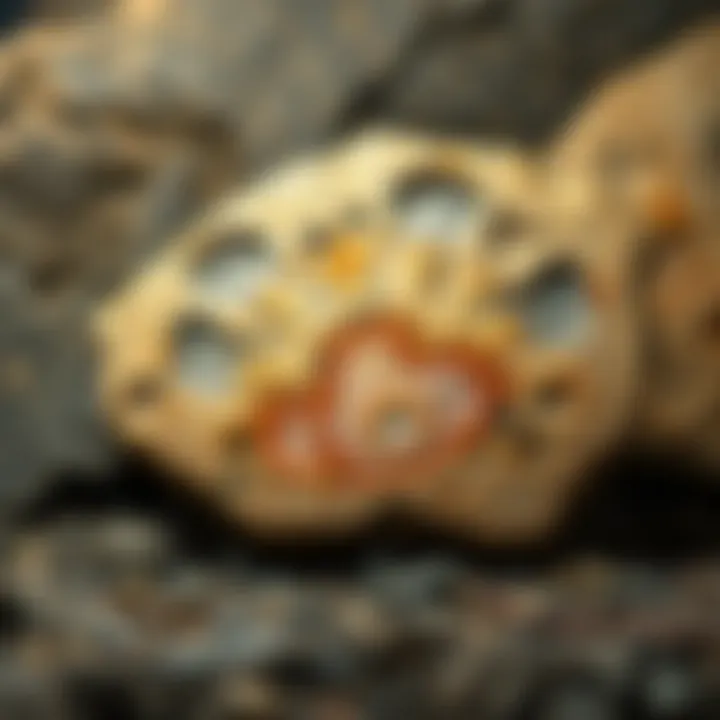
When it comes to slabs, several characteristics stand out as indicators of quality and value. Here are some of the important features to consider:
- Color: Vibrant and unique colors often enhance a slab's appeal. Irregular patterns and rich hues can signal a high-quality find.
- Texture: The surface texture indicates the slab's preservation state. An intact surface showcases the details of the specimen, while damage can significantly decrease its aesthetic appeal and monetary worth.
- Rarity: Limited availability of certain slabs defines their value. If a particular type is hard to come by, its worth can skyrocket, especially if it holds geological significance.
- Provenance: Knowing the history of where and how the slab was acquired can add to its allure. A slab from a notable location can often fetch a higher price.
- Scientific Importance: Some slabs are valuable for their paleontological or geological significance. They might contain fossils or minerals that provide insights into historical ecosystems.
Each of these aspects interacts to shape an overall perception of a slab’s value. By honing in on these features, collectors can make informed purchasing decisions and effectively engage with other enthusiasts in the community.
Market Trends and Valuation
Understanding current market trends for slabs is crucial for making wise choices. The slab market, like any collectible market, responds to various factors:
- Demand and Supply: Fluctuations in supply and popularity can lead to rapid shifts in value. An emerging trend in a specific type of slab can cause prices to surge.
- Events and Exhibits: Shows that highlight slab collections often excite collectors and can boost values for certain slabs showcased during these events.
- Cultural Influences: Interest in particular geological formations or specimens can adapt depending on cultural phenomena. For instance, if a famous movie features a type of slab, collectors often rush to acquire related slabs.
- Online Marketplaces: Platforms such as eBay or specialized collector forums like Reddit can display current valuations. Observing recent sales can give a clear indication of how the market sees particular slabs.
"Engaging with market trends not only prepares you for future investments but also enhances your discussions within the community, reflecting a well-informed perspective."
By staying in tune with these trends and understanding market dynamics, collectors can position themselves to better assess not just the value of the slabs they wish to acquire but also the broader landscape of slab value throughout time.
Gathering information and analyzing data from resources such as Wikipedia, Britannica, or dedicated collector pages on Reddit can further sharpen understanding in evaluating slabs. The synthesis of this knowledge allows for greater appreciation and smarter decisions, turning a collection into an enriching journey.
Caring for and Preserving Slabs
Caring for and preserving slabs is a cornerstone of successful slab collecting. Once you've gone through the effort of locating these geological treasures, maintaining their integrity ensures you can enjoy them for years to come. This not only enhances their aesthetic appeal but also preserves their scientific value. In this section, we will look into cleaning and maintenance practices as well as storage considerations, both of which are critical for keeping your slabs in top-notch condition.
Cleaning and Maintenance
Cleaning your slabs might sound straightforward, but it requires a gentle hand and a discerning eye. Using harsh chemicals can erode delicate surfaces or even damage significant markings. Start with a soft brush, perhaps something like a paintbrush or a similar tool, to whisk away dust or debris. If the slabs are particularly dirty, you might employ a small amount of distilled water or a simple, natural soap. Here are some best practices to keep in mind:
- Gentle Approach: Always handle the slabs delicately. Aggressive scrubbing is a no-no.
- Pat Dry: After cleaning, use a soft cloth to pat the slabs dry. Avoid wiping to prevent scratches.
- Regular Checks: Inspect your slabs regularly for signs of wear or damage. Early intervention can prevent further deterioration.
"A little maintenance goes a long way in preserving your geological treasures."
It's crucial to clean your slabs away from direct sunlight to avoid any unwanted temperature fluctuations that could lead to cracks or discoloration. Furthermore, keeping your cleaning tools clean and free from grit also prevents any accidental scratches. Changing the water regularly when washing multiple slabs is also advisable to maintain cleanliness.
Storage Considerations
The way you store your slabs can make or break their longevity. Proper storage techniques ensure that your prized specimens remain free from dust, potential impacts, and environmental factors. Here are some essential tips for slab storage:
- Choose the Right Environment: A cool, dry place is ideal. Avoid areas with high humidity, as moisture can lead to mold or mineral deterioration.
- Use Acid-Free Materials: When storing slabs, avoid materials containing acid—a common ingredient in many cardboard and plastic products, which can degrade the stone over time. Instead, consider using acid-free boxes or cloth wraps.
- Separating Slabs: Don't stack slabs directly on top of each other. Use dividers made of soft materials or store them in individual compartments to prevent scratches and chips.
- Avoid Direct Sunlight: Just like cleaning, exposure to sunlight during storage can lead to fading colors, especially in more fragile or layered slabs.
Implementing sound storage methods can not only preserve your slabs but also keep them adequately organized for easy access when needed.
The Role of Technology in Slab Seeking
Advancements in technology have profoundly shaped how slab seekers operate, enhancing both the efficiency and the efficacy of their efforts. In the fast-paced world of geology and paleontology, leveraging cutting-edge tools and software can make all the difference in locating, collecting, and preserving valuable slabs of stone and fossilized remains. As rock and fossil collectors increasingly turn to technology, understanding its role in slab seeking becomes essential for anyone serious about their craft.
Advancements in Tools and Equipment
The evolution of tools and equipment has transformed slab seeking from a task steeped in guesswork to a precise science. Modern collectors utilize a variety of innovative instruments that optimize their fieldwork. For instance, portable GPS devices empower seekers to map locations accurately, ensuring they can return to promising sites without losing track. Moreover, handheld scanners allow for quick assessments of rock formations and fossils, providing immediate data on size, shape, and even molecular composition. This not only speeds up the collection process but also minimizes the risk of damaging delicate specimens.
Some noteworthy tools include:
- Metal Detectors: Particularly beneficial in areas where metal artifacts may be hidden under layers of soil or rock.
- Rock Saws: Essential for cutting slabs to the desired thickness without causing chipping or other damage.
- Digital Cameras: High-resolution imagery can help document specimens in situ, essential for research or resale.
Technological investment, while sometimes costly, can yield significant returns. Collectors who embrace these innovations often find that the quality of their findings improves drastically. In an era where everything seems to be at our fingertips, the slab seeking community can no longer afford to ignore the substantial advantages offered by contemporary tools and equipment.
Geological Software Applications
In addition to physical tools, geological software applications play a pivotal role in modern slab seeking. These programs enable collectors to analyze geological maps, study topographical data, and even simulate the Earth's processes that affect slab formations. For example, software like ArcGIS provides essential insights into geological features, assisting collectors in identifying regions rich with potential finds.
Another remarkable application is the use of databases that compile geological information from various locations. Platforms that aggregate data about rock types, fossil locations, and historical findings can drastically increase a collector's knowledge base, guiding them to sites with higher yield potential.
The benefits of these software applications include:
- Enhanced Data Analysis: Understanding complex geological histories helps collectors target their efforts more effectively.
- Networking with Other Collectors: Many platforms allow users to share their findings and tips, fostering a community of collaboration.
- Research and Documentation: Software tools can assist in documenting findings for records or future reference, ensuring proper cataloging over time.
Ultimately, technology serves not merely as a set of tools; it represents a mindset shift in how collectors engage with their environment. The integration of these high-tech solutions in slab seeking not only boosts efficiency but also expands the collector's ability to unveil the secrets that lie beneath layers of sediment and history.
"Collecting slabs is not just about the hunt; it is about leveraging every available resource to deepen one’s understanding and appreciation of geology's wonders."
Even as the tools and applications evolve, the core passion for slab seeking remains unchanged. By staying informed about the latest advancements, collectors can ensure they are well-equipped for successful and responsible exploration.
Networking and Community Engagement
In the niche world of slab seeking, networking and community involvement stand tall as critical components. The interconnectedness fostered within these circles is not merely about expanding one’s collection; it’s about building relationships that can lead to deeper knowledge and appreciation of geological finds. Engaging with like-minded individuals can open doors to shared resources, tools, and techniques that may otherwise remain untapped.
Participating in community networks provides a unique opportunity to learn from the experiences of others. For many collectors, these interactions can lead to mentorship relationships where seasoned veterans share hard-won wisdom. In informal settings - whether at organized events or casual meet-ups - newcomers can receive firsthand insights into the best slab-seeking practices.
The benefits of networking extend beyond personal growth. Collectors often come together to advocate for responsible practices, promoting sustainable collection methods that respect local ecosystems. This advocacy strengthens the community and demonstrates a commitment to preserving the very resources they cherish. In today’s digital world, platforms such as Reddit and Facebook groups serve as virtual meeting spots where collectors can share tips, debates, and resources accessible to everyone, regardless of location.
"By connecting with others who share a passion for slabs, collectors not only enhance their own understanding but contribute to a larger movement that emphasizes ethical collecting."
Joining Collector Groups
Joining collector groups can double as a lifeline and a center for knowledge. These groups act as hubs where information flows freely, and collectors share insights on where to find specific slabs or tips on displaying collections. Engaging in these communities provides both emotional and intellectual support. The camaraderie built among members often leads to fruitful exchanges and lends itself to friendship beyond the confines of common interests.
Being part of a group also opens the door to organized field trips or events, enabling collectors to collaboratively improve their skills and share their find. Additionally, many groups hold competitions or exhibitions, giving members the chance to showcase exceptional pieces or learn from others’ collections.
As these groups often include members from various levels of expertise, newcomers can receive hands-on advice and encouragement while seasoned collectors can benefit from fresh perspectives. This multi-generational sharing creates an environment where knowledge evolves continuously, ensuring that everyone is up to date with the latest findings and best practices.
Sharing Knowledge and Experiences
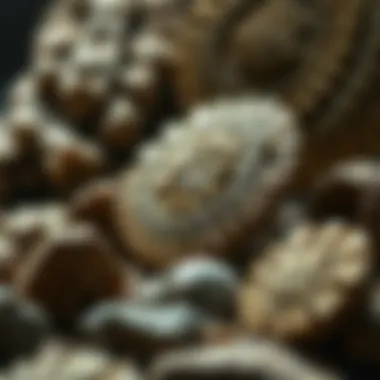

Knowledge is indeed power, especially in the intricate world of slab collection. Sharing experiences cultivates a community of learning and discovery. When collectors share their stories – including failures along the way – they provide invaluable lessons for others.
Creating forums for dialogue, such as online webinars or discussion panels, fosters an atmosphere of collective growth. By presenting their findings, techniques, or unexpected obstacles, collectors can help illuminate paths for others.
Moreover, hosting workshops can be hugely beneficial. These hands-on events allow individuals to learn directly from experts and gain insights into various techniques and tools available in the field today. Discussions surrounding conservation efforts and sustainable practices become more potent when coupled with real-life experience, thus emphasizing the importance of responsible collection.
Regularly sharing articles or resources on platforms like Wikipedia or Britannica invites all members to contribute to a continually evolving knowledge base. This collaborative spirit fosters a culture of inclusivity, where every voice adds value to the practice of slab seeking.
In essence, the act of sharing goes beyond individual benefit; it strengthens the entire community, ensuring that the love for slabs continues to thrive through generations.
Environmental Considerations in Slab Collection
When it comes to slab seeking, environmental considerations are not merely an afterthought; they are fundamental to maintaining the integrity of our ecosystems. Collectors and enthusiasts must recognize how their actions impact local habitats. Being mindful of these environmental aspects ensures that the natural landscapes from which we extract geological specimens remain healthy and vibrant for generations to come.
Impact on Local Ecosystems
Every hobby has its trade-offs, and slab collecting is no exception. Extraction of slabs, if done indiscriminately, can lead to significant disruption of local ecosystems. For example, frequent digging in certain areas can uproot plant life, which in turn affects soil erosion and local wildlife habitats.
Here are some points to ponder when considering the ecological balance:
- Biodiversity Loss: Collecting can disturb patterns of biodiversity, decreasing the variety of native species in an area. If not managed properly, slab seeking can contribute to the decline of endemic flora and fauna.
- Soil Erosion: Removing slab materials from hillsides or riverbanks can accelerate soil erosion. This not only affects the immediate area but can also lead to sedimentation downstream, harming aquatic life.
- Water Contamination: Depending on the materials collected and the methods used, there’s potential for introducing pollutants into water sources. Collectors need to be aware of the possible impact that their tools and techniques may have on surrounding waterways.
The awareness of these factors can equip slab seekers with the knowledge necessary to practice their hobby in a manner that respects and preserves the environment.
Sustainable Practices for Collectors
Adopting sustainable practices is key for collectors looking to minimize their ecological footprint. Here are a few strategies to adopt when engaging in slab collecting:
- Opt for Designated Areas: Always try to collect in designated areas where slab extraction is permitted. This helps avoid fragile ecosystems and protects areas that might be off-limits.
- Limit Collection Amounts: It’s advisable to take only what you need. Collecting smaller amounts helps ensure that the local base remains intact. Remember the saying: "Take only pictures, leave only footprints."
- Use Eco-Friendly Tools: When possible, utilize tools that minimize disruption to the environment. Hand tools often provide a gentler approach compared to heavy machinery.
- Educate Yourself and Others: Knowledge is power. Engage in workshops or webinars that focus on eco-friendly collecting methods; share this information within your collector community to promote best practices.
- Participate in Conservation Efforts: Find local initiatives that focus on preserving natural sites. Participating in habitat repair projects can offset the impact of your collection efforts.
Collecting slabs can coexist with responsible environmental stewardship, ensuring that the beauty of nature remains not just for today, but for future enthusiasts.
By consciously adopting these sustainable practices, slab collectors can contribute positively to their surroundings while continuing to enjoy the rich rewards of their passion.
The Future of Slab Seeking
The realm of slab seeking is on the cusp of transformative changes that promise to impact both enthusiasts and professionals alike. As society grows more aware of the finite nature of our geological resources, collectors are increasingly seeking to blend their passion with sustainable practices. The future hinges not just on what we collect, but how we do it—an understanding rooted deep in ethical considerations and innovation.
Innovation and Trends
The slab seeking landscape is evolving rapidly, driven by advancements in technology and shifts in collector behavior. New tools are emerging that let collectors delve deeper into geological formations with precision previously thought impossible. For instance, portable X-ray fluorescence (XRF) analyzers offer instant, non-destructive analysis of slab compositions, making it easier than ever to assess quality directly in the field. This innovation is not just a game changer for professional geologists. Everyday collectors are now able to make informed decisions about the specimens they might want to invest in, ensuring that they end up with high-quality pieces.
Moreover, 3D printing technology is on the rise, allowing enthusiasts to replicate rare specimens for study or display. This provides an effective means of preserving delicate fossils while still granting access to their unique features. Instead of solely focusing on the collection of original works, the future may see a trend in the appreciation of accurate replicas that serve educational purposes without depleting natural resources.
- Augmented Reality (AR) tools are becoming more common in slab seeking as well. This technology can enhance the field experience by overlaying digital geological data in real-time, guiding collectors to potential slab sites or helping them analyze geological features on the spot.
- Online marketplaces have emerged, allowing for seamless trades and sales between collectors worldwide, offering greater access to a range of materials and types of slabs.
Collectors who adapt to these developments will not only enhance their own experiences but also contribute positively to the broader community of slab collectors.
Educational Opportunities Ahead
The future of slab seeking undeniably lies in educational pathways that encourage responsible collection. As the intricacies of geology and paleontology become more relevant to hobbyists and professionals, there emerges a strong push for formalizing training and resources that benefit everyone involved.
- Workshops and Seminars: Local universities and geological societies are starting to organize workshops that focus on practical skills in slab collecting as well as the scientific underpinnings behind geology. These sessions create a platform for sharing knowledge and honing expertise, making them invaluable for both newbies and seasoned collectors.
- Online Courses: The availability of online courses covering everything from identification techniques, care of specimens, to ecological responsibilities provides unprecedented access for many aspiring collectors. These resources help pave the way for a new generation of informed enthusiasts who genuinely appreciate the art and science of slab seeking.
- Collaborative Projects: Future opportunities may also include collaborative research projects between collectors and educational institutions, where amateur enthusiasts assist in real field studies. This fosters a symbiotic relationship where both parties can learn and contribute meaningfully to geological science.
Epilogue
In wrapping up our exploration of slab seeker services, it's crucial to underscore not just the broad strokes, but the finer details that define the importance of the topic. Slab seeking goes beyond mere observation; it embodies a meticulous process that requires knowledge, skill, and respect for our natural treasures. The conclusion serves several vital functions here:
First, it reinforces the key elements we've discussed throughout the article. Each section has illuminated a different aspect of slab seeking—from its definition, importance, and process to caring for and preserving collectibles. By synthesizing this information, readers get a complete picture of how all these threads interweave to create a comprehensive understanding of what slab seeking entails.
Moreover, this summary paints a clear picture of the benefits for both seasoned collectors and newcomers. By emphasizing ethical practices, safety, and community engagement, we remind readers that slab seeking isn't merely about acquiring fossils or geological specimens; it's about doing so responsibly. As we strive for sustainable practices, there is a collective responsibility to ensure that future generations can appreciate and study these artifacts (source: Britannica) without degrading our ecosystems.
Considerations about the future of slab seeking also merit mention. Trends in technology and educational opportunities open new avenues for exploration, allowing collectors to deepen their expertise. This is critical as the landscape of geological pursuits evolves, necessitating adaptability and eagerness to learn.
Lastly, engaging with this content has a ripple effect. Each reader—whether a rock enthusiast or a fossil collector—returns to their community armed with knowledge. The discussions sparked by articles such as this can inspire new collaborations, foster a deeper respect for natural history, and promote an ethical approach to collection.
In closing, by understanding the full spectrum of slab seeking services, readers not only enrich their own experiences but also contribute positively to the geological and paleontological fields. The value of slab seeking transcends individual pursuits; it ties into a larger conversation about sustainability, ethics, and community, positioning everyone as stewards of our planet's history.
Importance of References in Slab Seeking
References serve multiple roles; they can be viewed as a beacon for both newcomers and seasoned collectors alike. They help to ground discussions in established research, ensuring that claims made are not just anecdotal but backed by studies or expert opinions. Consider the following key aspects of references in slab seeking:
- Credibility: Having information substantiated by research enhances its reliability. When readers know that data comes from respected publications—whether it’s academic articles or recognized industry reports—they can trust the insights provided.
- Resource for Further Learning: References often point to additional reading materials that can expand a reader's understanding. This is especially important in a field like slab collecting, where continually evolving knowledge bases can enrich one’s collection strategy and appreciation for geology.
- Connecting with Community: Many references lead to forums or groups where enthusiasts gather. Social platforms like Reddit or Facebook groups can bring collectors together, fostering a sense of community and shared learning.
Benefits of Utilizing References
In practical terms, utilizing a strong collection of references ensures that you are well-informed and can make educated decisions. Some direct benefits include:
- Enhanced Knowledge Base: By diving into diverse sources, collectors can learn about the latest tools, techniques, and ethical considerations, allowing them to better navigate the challenges of slab collecting.
- Networking Opportunities: Many references point to organizations or conferences that provide networking opportunities, which can be of great value in adding to one’s collecting knowledge.
- Increased Value Assessment: Understanding market trends and historical aspects of slab value can be heavily supported by referenced materials, allowing collectors to make better financial decisions.
Considerations About References
However, not all references are created equal. Here are a few considerations to bear in mind:
- Source Validity: Always check the credentials of the authors and the integrity of the publication.
- Relevance: Ensure that the information is current and applicable to your specific interest in slab collecting, as the field often shifts.
- Diverse Perspectives: Explore various kinds of references to gather a holistic view. Combining perspectives from scientific, cultural, and market-related articles can lead to well-rounded knowledge.
"Knowledge is power, but information is liberating." - Kofi Annan
Additional Reading and Resources
Here are some valuable resources for further reading that align with slab seeker interests:
- Wikipedia on Fossils
- Britannica's Geological Article
- Reddit's Rock Collecting Community
- US Geological Survey
- The National Park Service
Exploring these materials will not only fortify your grasp of slab seeking practices but also deepen your appreciation for the geological wonders they represent.



